 City mansion and St. Nikolai cathedral at the cardinal commercialize square of Greifswald. Greifswald ( german pronunciation : [ ˈɡʁaɪfsvalt ] ), officially the University and Hanseatic City of Greifswald ( german : Universitäts- und Hansestadt Greifswald, low german : Griepswoold ) is a city in northeastern Germany. It is situated in the department of state of Mecklenburg-Vorpommern, at an adequate distance of about 250 km ( 160 michigan ) from Germany ‘s two largest cities, Berlin and Hamburg, and 80 kilometer ( 50 nautical mile ) from the polish bound. The city belongs to Western Pomerania and flanks the Baltic Sea, and is crossed by a belittled river, the Ryck. It is besides located near Germany ‘s two largest islands, Rügen and Usedom, and it is close to three of Germany ‘s 14 national parks. It has been the capital of the newly established district of Vorpommern-Greifswald since the September 2011 zone reforms. in concert with Stralsund, Greifswald forms one of four urban centers of Mecklenburg-Vorpommern.
City mansion and St. Nikolai cathedral at the cardinal commercialize square of Greifswald. Greifswald ( german pronunciation : [ ˈɡʁaɪfsvalt ] ), officially the University and Hanseatic City of Greifswald ( german : Universitäts- und Hansestadt Greifswald, low german : Griepswoold ) is a city in northeastern Germany. It is situated in the department of state of Mecklenburg-Vorpommern, at an adequate distance of about 250 km ( 160 michigan ) from Germany ‘s two largest cities, Berlin and Hamburg, and 80 kilometer ( 50 nautical mile ) from the polish bound. The city belongs to Western Pomerania and flanks the Baltic Sea, and is crossed by a belittled river, the Ryck. It is besides located near Germany ‘s two largest islands, Rügen and Usedom, and it is close to three of Germany ‘s 14 national parks. It has been the capital of the newly established district of Vorpommern-Greifswald since the September 2011 zone reforms. in concert with Stralsund, Greifswald forms one of four urban centers of Mecklenburg-Vorpommern.
Reading: Greifswald – Wikipedia
The city ‘s population was listed at 55,659 in 2013, including many of the 12,500 students and 5,000 employees of the University of Greifswald. Greifswald draws external attention due to the university, its surrounding BioCon Valley, the Nord Stream natural gas pipeline and the Wendelstein 7-X nuclear fusion projects .
geography [edit ]
Greifswald is located in the northeast of Germany, approximately equidistant from Germany ‘s two largest islands, Rügen and Usedom. The city is situated at the south end of the Bay of Greifswald, the historic center being about five kilometres ( three miles ) up the river Ryck that crosses the city. The area around Greifswald is chiefly flat, and hardly reaches more than 20 m above sea flush. Two islands, Koos and Riems, are besides separate of Greifswald. Three of Germany ‘s fourteen national parks can be reached by car in one hour or less from Greifswald. Greifswald is besides approximately equidistant from Germany ‘s two largest cities, Berlin ( 240 kilometer or 150 nautical mile ) and Hamburg ( 260 kilometer or 160 nautical mile ). The nearest larger cities are Stralsund and Rostock. The coastal contribution of Greifswald at the mouth of the Ryck, named Greifswald-Wieck, evolved from a fish village. nowadays it provides a small beach, a marina and the chief port for Greifswald .
climate [edit ]
| Climate data for Greifswald, elevation: 6 m, 1961–1990 normals | |||||||||||||
|---|---|---|---|---|---|---|---|---|---|---|---|---|---|
| Month | Jan | Feb | Mar | Apr | May | Jun | Jul | Aug | Sep | Oct | Nov | Dec | Year |
| Average high °C (°F) | 1.8 (35.2) |
2.3 (36.1) |
6.5 (43.7) |
11.1 (52.0) |
16.8 (62.2) |
19.7 (67.5) |
21.4 (70.5) |
21.5 (70.7) |
17.5 (63.5) |
13.1 (55.6) |
7.1 (44.8) |
3.7 (38.7) |
11.9 (53.4) |
| Daily mean °C (°F) | −0.6 (30.9) |
−0.3 (31.5) |
3.5 (38.3) |
7.0 (44.6) |
12.2 (54.0) |
15.3 (59.5) |
17.1 (62.8) |
17.1 (62.8) |
13.7 (56.7) |
9.9 (49.8) |
4.8 (40.6) |
1.6 (34.9) |
8.5 (47.3) |
| Average low °C (°F) | −2.9 (26.8) |
−2.8 (27.0) |
0.4 (32.7) |
2.9 (37.2) |
7.5 (45.5) |
10.9 (51.6) |
12.7 (54.9) |
12.6 (54.7) |
9.9 (49.8) |
6.6 (43.9) |
2.5 (36.5) |
−0.5 (31.1) |
5.0 (41.0) |
| Average precipitation mm (inches) | 40.0 (1.57) |
30.0 (1.18) |
39.0 (1.54) |
39.0 (1.54) |
49.0 (1.93) |
59.0 (2.32) |
63.0 (2.48) |
54.0 (2.13) |
53.0 (2.09) |
43.0 (1.69) |
51.0 (2.01) |
47.0 (1.85) |
565.0 (22.24) |
| Average precipitation days | 10 | 8 | 10 | 8 | 8 | 8 | 10 | 9 | 9 | 9 | 11 | 11 | 111 |
| Mean monthly sunshine hours | 43.4 | 61.6 | 120.9 | 168.0 | 248.0 | 240.0 | 238.7 | 229.4 | 159.0 | 108.5 | 51.0 | 40.3 | 1,715.5 |
| Source: Wetterkontor[3] | |||||||||||||
history [edit ]
early history [edit ]
Greifswald was founded in 1199 when trappist monks founded the Eldena Abbey. [ 4 ] In 1250, Wartislaw III, Duke of Pomerania, granted town privileges to Greifswald according to the Lübeck law. [ 4 ]
Middle Ages and Reformation [edit ]
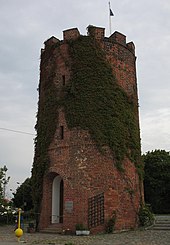 Fangenturm (Prisoners’ Tower), Greifswald Medieval ( Prisoners ‘ Tower ), Greifswald
Fangenturm (Prisoners’ Tower), Greifswald Medieval ( Prisoners ‘ Tower ), Greifswald The easterly side of the historic city center ( seen from the cathedral loom ) In medieval times, the locate of Greifswald was an unsettled forest which marked the bound between the Danish Principality of Rügen and the pomeranian County of Gützkow, which at that time was besides under Danish control condition. In 1199, the Rugian Prince Jaromar I allowed danish trappist monks to build Hilda Abbey, now Eldena Abbey, at the mouth of the River Ryck. Among the lands granted the monks was a natural salt dehydration pond a short way up the river, a site besides crossed by an crucial south–north via regia barter path. This site was named Gryp(he)swold(e), which is the low German precursor of the city ‘s modern name – which means “ Griffin ‘s Forest. ” Legend says the monks were shown the best locate for liquidation by a mighty gryphon living in a tree that purportedly grew on what became Greifswald ‘s oldest street, the Schuhagen. The town ‘s construction followed a scheme of rectangular streets, with church and marketplace sites reserved in central positions. It was settled primarily by Germans in the course of the Ostsiedlung, but settlers from other nations and Wends from nearby were attracted, excessively. The salt trade helped Eldena Abbey to become an influential religious concentrate, and Greifswald became a wide known market. When the Danes had to surrender their pomeranian lands confederacy of the Ryck, after losing the Battle of Bornhöved in 1227, the town succeeded to the pomeranian dukes. In 1241, the Rugian prince Wizlaw I and the pomeranian duke Wartislaw III both granted Greifswald market rights. In 1250, the latter granted the town a charter under Lübeck law, after he had been permitted to acquire the township site as a fief from Eldena Abbey in 1248. When Jazco of Salzwedel from Gützkow founded a franciscan friary within the walls of Greifswald, the Cistercians at Eldena lost much of their influence on the city ‘s far development. Just beyond Greifswald ‘s western limits, a town-like suburb ( Neustadt ) arise, separated from Greifswald by a dump. In 1264, Neustadt was incorporated and the dump was filled in. Eldena Abbey and the major buildings of Greifswald were erected in the north german Brick Gothic ( Backsteingotik ) stylus, found along the integral southerly slide of the Baltic. due to a steady population increase, Greifswald became at the end of the thirteenth century one of the earliest members of the Hanseatic League, which farther increased its trade and wealth. After 1296, Greifswald ‘s citizens no longer needed to serve in the pomeranian army, and pomeranian dukes did not reside in the city. In 1456, Greifswald ‘s mayor Heinrich Rubenow laid the foundations of one of the oldest universities in the worldly concern, the University of Greifswald, which was one of the first in Germany, and was, successively, the single old in Sweden and Prussia. In the course of Reformation, Eldena Abbey ceased to function as a monastery. Its possessions fell to the pomeranian dukes ; the bricks of its Gothic buildings were used by the locals for other construction. Eldena lost its disjoined status and was belated absorbed into the township of Greifswald. The religious houses within the township walls, the priories of the Blackfriars ( Dominicans ) in the northwest and the Greyfriars ( Franciscans ) in the southeast, were secularized. The buildings of the Dominicans ( the “ black monastery ” ) were turned over to the university ; the locate is still used as separate of the medical campus. The franciscan friary ( “ the “ grey monastery ” ) and its succeed buildings are now the pomeranian State Museum. During the Thirty Years ‘ War, Greifswald was occupied by ( Catholic ) Imperial forces from 1627 to 1631, [ 5 ] and thereafter, under the Treaty of Stettin ( 1630 ), by ( Protestant ) swedish forces. [ 6 ]
The easterly side of the historic city center ( seen from the cathedral loom ) In medieval times, the locate of Greifswald was an unsettled forest which marked the bound between the Danish Principality of Rügen and the pomeranian County of Gützkow, which at that time was besides under Danish control condition. In 1199, the Rugian Prince Jaromar I allowed danish trappist monks to build Hilda Abbey, now Eldena Abbey, at the mouth of the River Ryck. Among the lands granted the monks was a natural salt dehydration pond a short way up the river, a site besides crossed by an crucial south–north via regia barter path. This site was named Gryp(he)swold(e), which is the low German precursor of the city ‘s modern name – which means “ Griffin ‘s Forest. ” Legend says the monks were shown the best locate for liquidation by a mighty gryphon living in a tree that purportedly grew on what became Greifswald ‘s oldest street, the Schuhagen. The town ‘s construction followed a scheme of rectangular streets, with church and marketplace sites reserved in central positions. It was settled primarily by Germans in the course of the Ostsiedlung, but settlers from other nations and Wends from nearby were attracted, excessively. The salt trade helped Eldena Abbey to become an influential religious concentrate, and Greifswald became a wide known market. When the Danes had to surrender their pomeranian lands confederacy of the Ryck, after losing the Battle of Bornhöved in 1227, the town succeeded to the pomeranian dukes. In 1241, the Rugian prince Wizlaw I and the pomeranian duke Wartislaw III both granted Greifswald market rights. In 1250, the latter granted the town a charter under Lübeck law, after he had been permitted to acquire the township site as a fief from Eldena Abbey in 1248. When Jazco of Salzwedel from Gützkow founded a franciscan friary within the walls of Greifswald, the Cistercians at Eldena lost much of their influence on the city ‘s far development. Just beyond Greifswald ‘s western limits, a town-like suburb ( Neustadt ) arise, separated from Greifswald by a dump. In 1264, Neustadt was incorporated and the dump was filled in. Eldena Abbey and the major buildings of Greifswald were erected in the north german Brick Gothic ( Backsteingotik ) stylus, found along the integral southerly slide of the Baltic. due to a steady population increase, Greifswald became at the end of the thirteenth century one of the earliest members of the Hanseatic League, which farther increased its trade and wealth. After 1296, Greifswald ‘s citizens no longer needed to serve in the pomeranian army, and pomeranian dukes did not reside in the city. In 1456, Greifswald ‘s mayor Heinrich Rubenow laid the foundations of one of the oldest universities in the worldly concern, the University of Greifswald, which was one of the first in Germany, and was, successively, the single old in Sweden and Prussia. In the course of Reformation, Eldena Abbey ceased to function as a monastery. Its possessions fell to the pomeranian dukes ; the bricks of its Gothic buildings were used by the locals for other construction. Eldena lost its disjoined status and was belated absorbed into the township of Greifswald. The religious houses within the township walls, the priories of the Blackfriars ( Dominicans ) in the northwest and the Greyfriars ( Franciscans ) in the southeast, were secularized. The buildings of the Dominicans ( the “ black monastery ” ) were turned over to the university ; the locate is still used as separate of the medical campus. The franciscan friary ( “ the “ grey monastery ” ) and its succeed buildings are now the pomeranian State Museum. During the Thirty Years ‘ War, Greifswald was occupied by ( Catholic ) Imperial forces from 1627 to 1631, [ 5 ] and thereafter, under the Treaty of Stettin ( 1630 ), by ( Protestant ) swedish forces. [ 6 ]
1631/48—1815 : sweden [edit ]
 Bay of Greifswald
Bay of Greifswald Marktplatz) Greifswald ‘s lively market straight ( During the Thirty Years ‘ War, swedish forces entered the Duchy of Pomerania in 1630. [ 5 ] Greifswald was besieged by swedish troops on 12 June 1631 [ 5 ] and surrendered on 16 June. [ 5 ] Gustavus Adolphus of Sweden had returned from Brandenburg to supervise the siege, and upon his arrival received the university ‘s court for the liberation from catholic forces. [ 5 ] After the Thirty Years ‘ War ( 1618–1648 ), Greifswald and the region surrounding it became share of the Kingdom of Sweden. Swedish Pomerania, as it was then called, remained part of the swedish kingdom until 1815, when it became part of the Kingdom of Prussia as the Province of Pomerania. In 1871, it devolved to Germany. The Thirty Years ‘ War had caused starvation throughout Germany, and by 1630 Greifswald ‘s population had shrunk by two-thirds. many buildings were left vacant and fell into decay. Soon, early wars followed : the Swedish-Polish War and the Swedish-Brandenburg War both involved the nominally swedish township of Greifswald. In 1659 and 1678, Brandenburgian troops bombarded the town. The foremost barrage hit chiefly the northeast contribution of town, wrecking 16 houses. The second bombing leveled 30 houses and damaged hundreds more all over the city. Cannonballs of this second barrage can still be seen in the walls of St Mary ‘s Church. During the Great Northern War ( 1700–1721, Greifswald was compelled to house soldiers. While besieging neighboring Stralsund, Russian czar Peter the Great allied with George I of Great Britain in the Treaty of Greifswald. large fires in 1713 and 1736 destroy houses and other buildings, including City Hall. The swedish government had issued decrees in 1669 and 1689 absolving anyone of taxes who built or rebuilt a house. These decrees remained basically in force, under prussian administration, until 1824. [ 7 ] In 1763, Greifswald Botanic Garden was founded .
Marktplatz) Greifswald ‘s lively market straight ( During the Thirty Years ‘ War, swedish forces entered the Duchy of Pomerania in 1630. [ 5 ] Greifswald was besieged by swedish troops on 12 June 1631 [ 5 ] and surrendered on 16 June. [ 5 ] Gustavus Adolphus of Sweden had returned from Brandenburg to supervise the siege, and upon his arrival received the university ‘s court for the liberation from catholic forces. [ 5 ] After the Thirty Years ‘ War ( 1618–1648 ), Greifswald and the region surrounding it became share of the Kingdom of Sweden. Swedish Pomerania, as it was then called, remained part of the swedish kingdom until 1815, when it became part of the Kingdom of Prussia as the Province of Pomerania. In 1871, it devolved to Germany. The Thirty Years ‘ War had caused starvation throughout Germany, and by 1630 Greifswald ‘s population had shrunk by two-thirds. many buildings were left vacant and fell into decay. Soon, early wars followed : the Swedish-Polish War and the Swedish-Brandenburg War both involved the nominally swedish township of Greifswald. In 1659 and 1678, Brandenburgian troops bombarded the town. The foremost barrage hit chiefly the northeast contribution of town, wrecking 16 houses. The second bombing leveled 30 houses and damaged hundreds more all over the city. Cannonballs of this second barrage can still be seen in the walls of St Mary ‘s Church. During the Great Northern War ( 1700–1721, Greifswald was compelled to house soldiers. While besieging neighboring Stralsund, Russian czar Peter the Great allied with George I of Great Britain in the Treaty of Greifswald. large fires in 1713 and 1736 destroy houses and other buildings, including City Hall. The swedish government had issued decrees in 1669 and 1689 absolving anyone of taxes who built or rebuilt a house. These decrees remained basically in force, under prussian administration, until 1824. [ 7 ] In 1763, Greifswald Botanic Garden was founded .
 Marktplatz) The cardinal market squarely (
Marktplatz) The cardinal market squarely (
1815 – today : Germany [edit ]
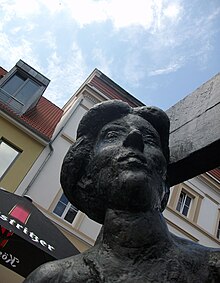 Woman at the ‘fishers good ‘, by Jo Jastram in the twentieth century During the nineteenth hundred, Greifswald attracted many polish students. [ 8 ] After Breslau ( now Wrocław, Poland ) and Berlin, Greifswald hosted the third-largest group of polish students in Germany. [ 9 ] About 1900, the township – for the first time since the Middle Ages – expanded importantly beyond the erstwhile town walls. besides, a major railroad track connected Greifswald to Stralsund and Berlin ; a local anesthetic railway line farther connected Greifswald to Wolgast. The city survived World War II without much destruction, even though it housed a large german Army ( Wehrmacht ) garrison. During the war it was a web site of a camp for prisoners of war held by Nazi Germany called Stalag II-C. [ 10 ] In April 1945, german Army Colonel ( Oberst ) Rudolf Petershagen defied orders and surrendered the city to the Red Army without a fight. From 1949 to 1990, Greifswald was contribution of the German Democratic Republic ( DDR ). During this clock time, most diachronic buildings in the medieval parts of the city were neglected and a number of old buildings were pulled down. The population increased significantly, because of the construction of a nominal 1760 MW Soviet -made nuclear office establish in Lubmin, which was closed in the early 1990s. New suburbs were erected in the monolithic industrial socialist stylus ( see Plattenbau ). They still firm most of the city ‘s population. These new suburbs were placed east and southeasterly of central Greifswald, shifting the former town center to the northwestern boundary of the modern township. reconstruction of the old town began in the late 1980s. about all of it has been restored. Before that about all of the old northerly town adjacent to the port was demolished and subsequently rebuilt. The historic marketplace is considered one of the most beautiful in northern Germany. The town attracts many tourists, due in separate to its proximity to the Baltic Sea. Greifswald ‘s greatest population was reached in 1988, with about 68,000 inhabitants, but it decreased subsequently to 55,000, where it has now stabilized. Reasons for this include migration to western german cities a well as suburbanisation. however, the number of students quadrupled from 3,000 in 1990 to more than 11,000 in 2007 and the university employs 5,000 people ; closely one in three people in Greifswald are linked in some direction to higher education. Despite its relatively little population, Greifswald retains a supra-regional relevance linked to its intellectual role as a university township and to the learn of the cardinal functions of the erstwhile prussian state of Pomerania after World War II, such as the seat of the bishop of the Pomeranian Lutheran Church, the department of state archives ( Landesarchiv ) and the Pomeranian Museum ( Pommersches Landesmuseum ). Three courts of the state of Mecklenburg-Vorpommern are besides based at Greifswald :
Woman at the ‘fishers good ‘, by Jo Jastram in the twentieth century During the nineteenth hundred, Greifswald attracted many polish students. [ 8 ] After Breslau ( now Wrocław, Poland ) and Berlin, Greifswald hosted the third-largest group of polish students in Germany. [ 9 ] About 1900, the township – for the first time since the Middle Ages – expanded importantly beyond the erstwhile town walls. besides, a major railroad track connected Greifswald to Stralsund and Berlin ; a local anesthetic railway line farther connected Greifswald to Wolgast. The city survived World War II without much destruction, even though it housed a large german Army ( Wehrmacht ) garrison. During the war it was a web site of a camp for prisoners of war held by Nazi Germany called Stalag II-C. [ 10 ] In April 1945, german Army Colonel ( Oberst ) Rudolf Petershagen defied orders and surrendered the city to the Red Army without a fight. From 1949 to 1990, Greifswald was contribution of the German Democratic Republic ( DDR ). During this clock time, most diachronic buildings in the medieval parts of the city were neglected and a number of old buildings were pulled down. The population increased significantly, because of the construction of a nominal 1760 MW Soviet -made nuclear office establish in Lubmin, which was closed in the early 1990s. New suburbs were erected in the monolithic industrial socialist stylus ( see Plattenbau ). They still firm most of the city ‘s population. These new suburbs were placed east and southeasterly of central Greifswald, shifting the former town center to the northwestern boundary of the modern township. reconstruction of the old town began in the late 1980s. about all of it has been restored. Before that about all of the old northerly town adjacent to the port was demolished and subsequently rebuilt. The historic marketplace is considered one of the most beautiful in northern Germany. The town attracts many tourists, due in separate to its proximity to the Baltic Sea. Greifswald ‘s greatest population was reached in 1988, with about 68,000 inhabitants, but it decreased subsequently to 55,000, where it has now stabilized. Reasons for this include migration to western german cities a well as suburbanisation. however, the number of students quadrupled from 3,000 in 1990 to more than 11,000 in 2007 and the university employs 5,000 people ; closely one in three people in Greifswald are linked in some direction to higher education. Despite its relatively little population, Greifswald retains a supra-regional relevance linked to its intellectual role as a university township and to the learn of the cardinal functions of the erstwhile prussian state of Pomerania after World War II, such as the seat of the bishop of the Pomeranian Lutheran Church, the department of state archives ( Landesarchiv ) and the Pomeranian Museum ( Pommersches Landesmuseum ). Three courts of the state of Mecklenburg-Vorpommern are besides based at Greifswald :
- the Supreme Administrative Court (Oberverwaltungsgericht);
- the Supreme Constitutional Court (Landesverfassungsgericht); and
- the Financial Court (Finanzgericht)
administrative division [edit ]
| District (modern) |
District (historical) |
Amalgamation | Size (ha) |
Population |
|---|---|---|---|---|
| „Innenstadt“ (downtown) |
Innenstadt | 87.0 | 3.883 | |
| Steinbeckervorstadt | 349.6 | 163 | ||
| Fleischervorstadt | 52.7 | 2.911 | ||
| Nördliche Mühlenvorstadt | 173.8 | 4.097 | ||
| Südliche Mühlenvorstadt, Obstbausiedlung |
108.1 | 4.650 | ||
| Fettenvorstadt, Stadtrandsiedlung |
657.3 | 2.853 | ||
| Industriegebiet | 634.7 | 583 | ||
| „Schönwalde I und Südstadt“ |
Schönwalde I, Südstadt |
132.1 | 12.583 | |
| „Schönwalde II“ | Schönwalde II | 88.0 | 9.994 | |
| Groß Schönwalde | 1974 | 580.8 | 749 | |
| „Ostseeviertel“ | Ostseeviertel | 219.7 | 8.577 | |
| „Wieck“ | Ladebow | 1939 | 544.4 | 499 |
| Wieck | 1939 | 44.2 | 395 | |
| „Eldena“ | Eldena | 1939 | 675.5 | 1.994 |
| „Friedrichshagen“ | Friedrichshagen | 1960 | 436.5 | 196 |
| „Riems“ | Riems, Insel Koos |
233.6 | 814 | |
| (Size and population data as of 2002) | ||||
economy [edit ]
 The energy sector is important to the city ‘s economy. even the church in the Wieck zone of Greifswald has solar panels on its roof .
The energy sector is important to the city ‘s economy. even the church in the Wieck zone of Greifswald has solar panels on its roof .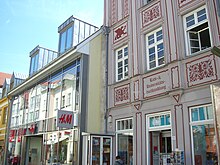 Shops on the High Street ( or Main Street ) : Greifswald is a shopping destination for the stallion region. Greifswald and Stralsund are the largest cities in the Vorpommern separate of Mecklenburg-Vorpommern. Of great importance to the city ‘s economy is the local anesthetic university with its 12,000 students and closely 5,000 employees in addition to many people employed at independent research facilities such as the Friedrich Loeffler Institute and by-product firms. Greifswald is besides the seat of the diocese of the pomeranian Evangelical Church deoxyadenosine monophosphate well as the seat of the state ‘s head built-in court, and foreman fiscal woo. Tourism plays a critical character as Greifswald is situated between the islands of Rügen and Usedom on the popular German Baltic coast, which brings in many tourists. One of Europe ‘s largest producers of photovoltaic modules, Berlin-based Solon SE, has a product site in Greifswald. The world ‘s third-largest manufacturer of yachts global, HanseYachts, is based in Greifswald. In the energy sector, an offshore natural boast pipeline from Russia to Germany, Nord Stream, stops in Lubmin ( near Greifswald ). Riemser Arzneimittel is a pharmaceutical company based on the island of Riems, which is separate of the city of Greifswald. Siemens Communications F & E produces goods here american samoa well. In a 2008 study, [ 11 ] Greifswald was declared Germany ‘s most dynamic city. According to another 2008 report, Greifswald is the “ youngest city ” in Germany having the highest share of heads of family under 30 years of old age. [ 12 ]
Shops on the High Street ( or Main Street ) : Greifswald is a shopping destination for the stallion region. Greifswald and Stralsund are the largest cities in the Vorpommern separate of Mecklenburg-Vorpommern. Of great importance to the city ‘s economy is the local anesthetic university with its 12,000 students and closely 5,000 employees in addition to many people employed at independent research facilities such as the Friedrich Loeffler Institute and by-product firms. Greifswald is besides the seat of the diocese of the pomeranian Evangelical Church deoxyadenosine monophosphate well as the seat of the state ‘s head built-in court, and foreman fiscal woo. Tourism plays a critical character as Greifswald is situated between the islands of Rügen and Usedom on the popular German Baltic coast, which brings in many tourists. One of Europe ‘s largest producers of photovoltaic modules, Berlin-based Solon SE, has a product site in Greifswald. The world ‘s third-largest manufacturer of yachts global, HanseYachts, is based in Greifswald. In the energy sector, an offshore natural boast pipeline from Russia to Germany, Nord Stream, stops in Lubmin ( near Greifswald ). Riemser Arzneimittel is a pharmaceutical company based on the island of Riems, which is separate of the city of Greifswald. Siemens Communications F & E produces goods here american samoa well. In a 2008 study, [ 11 ] Greifswald was declared Germany ‘s most dynamic city. According to another 2008 report, Greifswald is the “ youngest city ” in Germany having the highest share of heads of family under 30 years of old age. [ 12 ]
Read more: Mizuno – Wikipedia
Politics [edit ]
City Council [edit ]
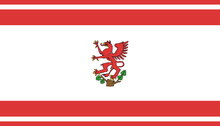 flag of Greifswald Politics in Greifswald, as in most of western Pomerania, is traditionally dominated by the centre-right CDU. The city council is elected for five year terms. Since the last election on 25 May 2014, the 43 city council seats are allocated as follows :
flag of Greifswald Politics in Greifswald, as in most of western Pomerania, is traditionally dominated by the centre-right CDU. The city council is elected for five year terms. Since the last election on 25 May 2014, the 43 city council seats are allocated as follows :
- CDU – 11 seats
- Die Linke – 8 seats
- SPD – 6 seats
- Greens – 5 seats
- FDP – 2 seats
- AfD – 2 seats
- Pirates – 2 seats
- local citizens’ movements – 7 seats
Twin towns – sister cities [edit ]
Greifswald is twinned with : [ 13 ]
friendly cities [edit ]
Greifswald has friendly relations with : [ 14 ]
department of education [edit ]
University [edit ]
 The city ‘s public library. Founded in 1456, the University of Greifswald is one of the oldest universities in both Germany and Europe. Currently, about 12,300 students study at five faculties : theology, law / economics, music, humanities and social sciences, and mathematics /natural sciences. The university co-operates with many research facilities, such as :
The city ‘s public library. Founded in 1456, the University of Greifswald is one of the oldest universities in both Germany and Europe. Currently, about 12,300 students study at five faculties : theology, law / economics, music, humanities and social sciences, and mathematics /natural sciences. The university co-operates with many research facilities, such as :
secondary coil schools [edit ]
- Alexander-von-Humboldt-Gymnasium
- Friedrich-Ludwig-Jahn-Gymnasium (founded in 1561 as schola senatoria and one of the oldest schools still existing in Germany)
- Johann-Gottfried-Herder-Gymnasium (fused with the Jahn-Gymnasium in 2006)
- Ostseegymnasium
acculturation [edit ]
Museums, exhibitions, and cultural events [edit ]
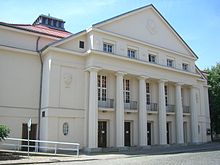 Theater Vorpommern (Theater of Hither Pomerania) ( theater of Hither Pomerania ) Greifswald has a act of museums and exhibitions, most notably the pomeranian State Museum ( german : Pommersches Landesmuseum ) : history of Pomerania and arts, including works by Caspar David Friedrich, a native of Greifswald. The University of Greifswald besides has a big number of collections, some of which are on display for the public. Events and attractions hosted in Greifswald include :
Theater Vorpommern (Theater of Hither Pomerania) ( theater of Hither Pomerania ) Greifswald has a act of museums and exhibitions, most notably the pomeranian State Museum ( german : Pommersches Landesmuseum ) : history of Pomerania and arts, including works by Caspar David Friedrich, a native of Greifswald. The University of Greifswald besides has a big number of collections, some of which are on display for the public. Events and attractions hosted in Greifswald include :
- Theater Vorpommern: theatre, orchestra and opera
- Stadthalle Greifswald: medium-sized convention centre
- Festspiele Mecklenburg-Vorpommern: Greifswald is one of several sites of the state’s classical music festival
- Nordischer Klang is the largest festival of Nordic culture outside of the Nordic countries themselves
- Bach festival
- Eldena Jazz Evenings
- Gaffelrigg summer fair
- Museumshafen: historic ships in the “museum port”
- regular literary events in the Koeppenhaus
- St. Spiritus cultural centre
- Greifswald International Students Festival (GrIStuF e. V.)
- Radio 98eins (open radio)
- Greifswald Night of Music (Greifswalder Musiknacht)
- Greifswald long-ship festival (Greifswalder Drachenbootfest)
cinema [edit ]
artwork house is shown regularly at the film club “ Casablanca ”, [ 15 ] which has existed since 1992. It puts its focus on the inheritance of 35mm films. The Koeppenhaus shows artwork house film as separate of its special programmes. The film enterprise “ KinoAufSegeln ” [ 16 ] screening art sign of the zodiac loose air on the web site of the Greifswalder Museumswerft, Greifswald ‘s shipyard museum. It exists since 2015. All three are active members of the Verband für Filmkommunikation ( Association for Film Communication ) of Mecklenburg-Vorpommern, the umbrella constitution of art house film and film clubs .
Sightseeing [edit ]
medieval churches [edit ]
Among Greifswald ‘s brick gothic churches is the Dom St. Nikolai ( St. Nicholas collegiate church ) in the city center, which, with its 100 meters ( 330 foot ) tall column, is the symbol of the city. The claim go steady of its establish is unknown, but the original church dates from the late thirteenth century. The tower was built, and an organ installed in the church, in the late fourteenth century. In the mid-17th century, when Greifswald was partially of Swedish Pomerania, austere storm price was repaired with hold from the swedish Crown. Neglect during the early on DDR period necessitated across-the-board renovation, completed in 1989, the survive broad year of the DDR. The St.-Marien-Kirche ( St. Mary ‘s Church ), built adjacent to the Old Town market in the mid-13th hundred, contains ground-level brick walls four and one-half meters ( 14 foot ) dense. chivalric murals depicting scenes from the Passion of Christ were restored in 1977–84. The church harmonium, known as the Marienorgel ( St. Mary ‘s Organ ), was installed by the Stralsund organ builder Friedrich Mehmel in 1866, replacing an earlier instrument. It features 37 registers .
On the west english of the Old Town stands the St.-Jacobi-Kirche ( St. James ‘s Church ), dating from the early thirteenth hundred. In 1400 it was rebuilt to contain a nave and two transepts, requiring the summation of four buttresses. The master half-timber loom, heavily damaged in a 1955 fire, was rebuilt in brick .
Stolpersteine [edit ]

transport [edit ]
According to a 2009 study, 44 % of all people in Greifswald use their bicycle for daily enchant within the city, which, at the time, was the highest rate in Germany. [ 19 ] There are besides public local and regional bus operators. local buses are run by SWG ( Stadtwerke Greifswald ). Greifswald is situated at an equal distance of about 250 km ( 160 nautical mile ) to Germany ‘s two largest cities, Berlin and Hamburg, which can be reached via the Autobahn 20 by cable car in about two hours. There are besides prepare connections to and from Hamburg ( via Stralsund and Rostock ), and Berlin. The popular summer tourist destinations Usedom and Rügen can be reached both by car and train. Greifswald railway station connects Greifswald with Stralsund, Züssow, Usedom, Angermünde, Eberswalde, Berlin and Szczecin ( through Pasewalk ). The station is besides served by ICE and EuroCity services to cities in Germany and the Czech Republic. Greifswald has a port on the Baltic Sea equally well as several marinas. The historic city center is about 3 kilometres ( 2 miles ) off the shore, and can be reached by yachts and little boats on the river Ryck. The Bay of Greifswald is a popular set for sailing and surfboard, with Germany ‘s two largest islands, Rügen and Usedom, just off the coast .
luminary people [edit ]
 Edmund Hoefer, 1865
Edmund Hoefer, 1865 Max Lenz, 1897
Max Lenz, 1897
early Times [edit ]
19th C [edit ]
20th C [edit ]
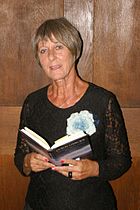 Doris Gercke, 2007
Doris Gercke, 2007 Luise Amtsberg, 2013
Luise Amtsberg, 2013
See besides [edit ]
Notes and references [edit ]
Read more: Krabi News – Krabi Directory
